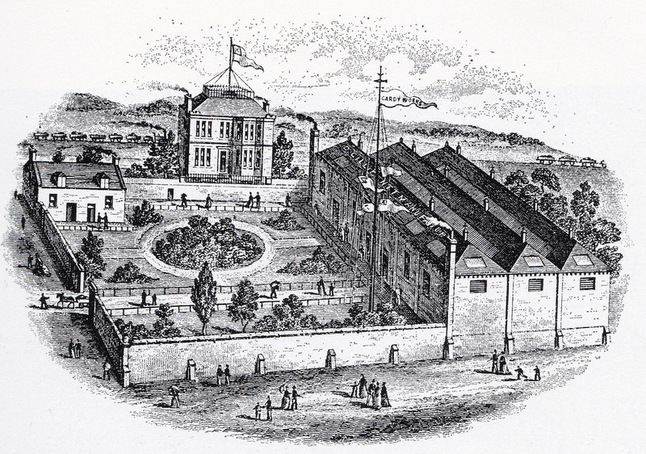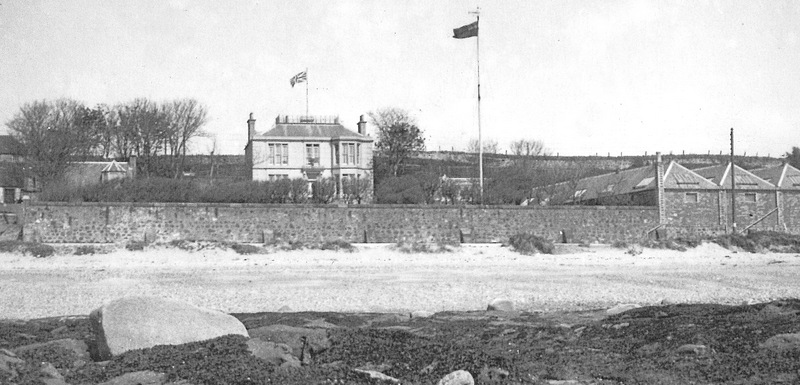By 1891, David Gillies was referred to as a "retired net manufacturer" in the census, residing at Cardy House. David Gillies died in 1923 aged 79. The Cardy Works meanwhile - although pressed into service during both World Wars as an army billet and then a food store - remained suspended in time for decades. For a long time, equipment, furniture, papers, tools, ropes, etc were kept within it as a reminder of the building's industrial past. In more recent years, the Cardy Net Works have been transformed into a modern, beach-side holiday home. Cardy House was itself a Victorian time capsule for many a decade - more on that in the next post.
|
The Cardy Net Works must have become successful very quickly after the business was established, as, by 1871, proprietor David Gillies was able to build himself a substantial villa, which was and still is named 'Cardy House'. The images below show how imposing the house was, on its elevated position behind the works, facing out to sea - especially with the tall flag pole rising from the roof. The artist's impression view of the house and works, used on trade cards, letter heads, price lists, etc, portrays the works as a hive of activity. There are many people visible inside the grounds and on the streets outside. A horse and cart is making its exit through the gates - perhaps rushing an order along to the harbour or train station. Not one, but two, trains are passing along the line behind Cardy House. Flags are flying, smoke is billowing and the gardens are blooming. It's exactly the sort of image that a successful Victorian business would wish to project. The 1885 unveiling of the statue of Alexander Selkirk would not have done business any harm, giving Largo and the Cardy Works publicity and bringing distinguished guests along for the occasion. One of the floral arches which spanned the main street for the event read 'May Cardy Works Flourish'. However, the next year saw the works largely close down (although some elements of the business continued on a much smaller scale). This has been attributed to the decline in herring stocks around the Scottish coasts at that time. Despite a strong desire among locals to see the works return to their former glory after fish stocks recovered, this was not to be.
By 1891, David Gillies was referred to as a "retired net manufacturer" in the census, residing at Cardy House. David Gillies died in 1923 aged 79. The Cardy Works meanwhile - although pressed into service during both World Wars as an army billet and then a food store - remained suspended in time for decades. For a long time, equipment, furniture, papers, tools, ropes, etc were kept within it as a reminder of the building's industrial past. In more recent years, the Cardy Net Works have been transformed into a modern, beach-side holiday home. Cardy House was itself a Victorian time capsule for many a decade - more on that in the next post.
0 Comments
Your comment will be posted after it is approved.
Leave a Reply. |
AboutThis blog is about the history of the villages of Lundin Links, Lower Largo and Upper Largo in Fife, Scotland. Comments and contributions from readers are very welcome!
SearchThere is no in-built search facility on this site. To search for content, go to Google and type your search words followed by "lundin weebly". Categories
All
Archives
July 2024
|


 RSS Feed
RSS Feed
